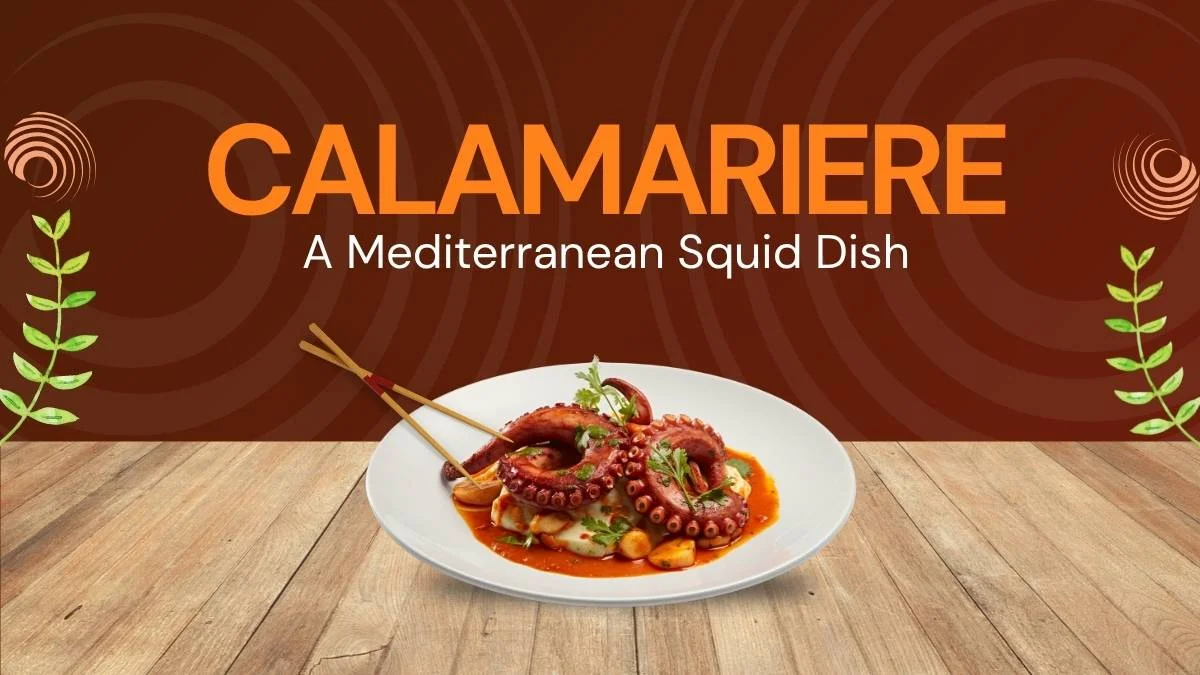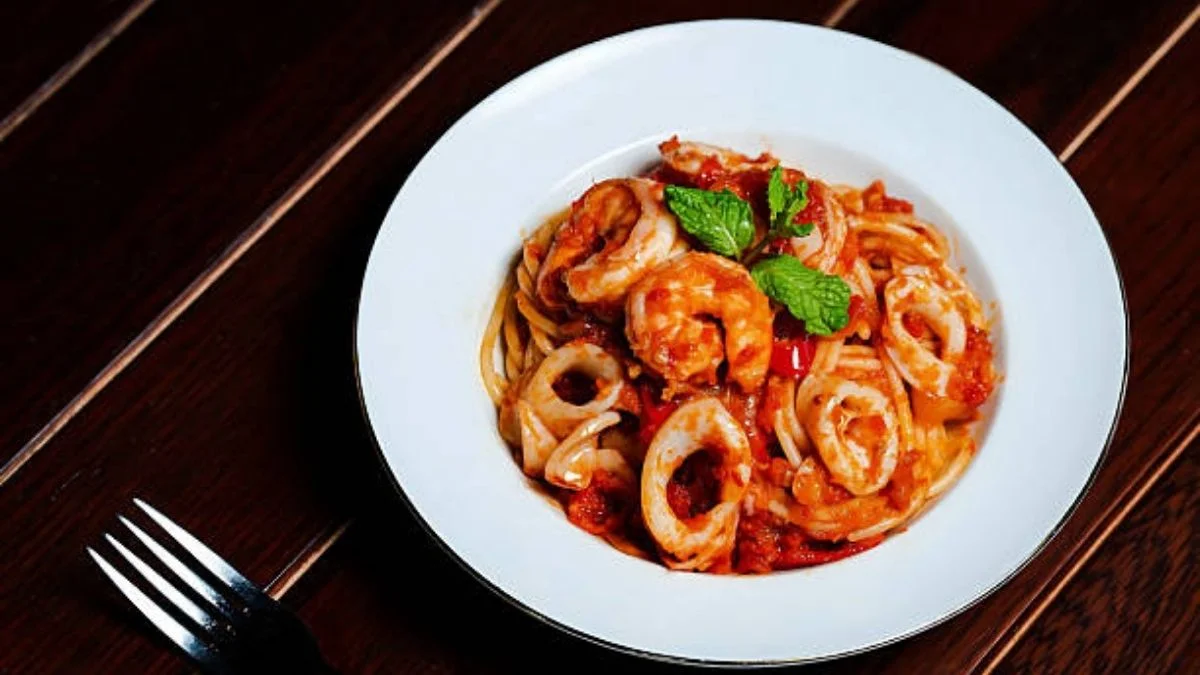FOODS AND DRINKS
Calamariere: A Mediterranean Squid Dish Worth Savoring

Calamariere is a Mediterranean seafood dish featuring squid as the primary ingredient. The term itself draws from calamari, the Italian word for squid, combined with culinary traditions that elevate it into a main-course masterpiece. Unlike fried calamari rings that dominate global menus, calamariere is a more nuanced and sophisticated preparation that focuses on enhancing the natural flavors of squid through thoughtful cooking methods and complementary ingredients.
Origins and Historical Significance
The Mediterranean region has long depended on the sea for sustenance, and squid has been a staple in the diets of coastal communities for centuries. Historical records and archaeological findings suggest that squid, along with other cephalopods, were consumed by ancient civilizations such as the Greeks and Romans. While the term “calamariere” may not be as widely recognized globally as other seafood dishes, it has long held a place in the local kitchens and seafood markets of southern Europe.
In Italy, the name derives from calamaro, the Italian word for squid, while in Spain and Greece, it is known by similar names and enjoys comparable preparation styles. The dish’s evolution is marked by the unique ingredients and cooking traditions of each region, making calamariere both a local comfort food and a symbol of Mediterranean unity through cuisine.
The Art of Preparing Calamariere
1. Grilled Calamariere
In regions like southern Italy and the Greek islands, calamariere is often grilled over an open flame. The squid is typically marinated in olive oil, lemon juice, garlic, and fresh herbs such as oregano or thyme. Grilling imparts a smoky flavor that enhances the squid’s natural sweetness and results in a tender yet slightly charred texture.
2. Stuffed Calamariere
A more elaborate variation includes stuffing the squid tubes with a mixture of ingredients such as breadcrumbs, minced garlic, chopped tentacles, capers, parsley, and occasionally cheese or cured meats. This method, common in parts of Spain and Sicily, transforms the dish into a hearty, main-course offering.
3. Stewed or Braised Calamariere
In stewed versions, squid is simmered slowly in a tomato-based sauce often infused with wine, olives, onions, and bell peppers. This preparation is particularly prevalent in Catalonia and southern Italy, where it is served with crusty bread or polenta, allowing diners to soak up the flavorful broth.
Key Ingredients and Flavor Profile
The ingredients used in calamariere reflect the Mediterranean pantry—fresh, vibrant, and aromatic.
- Squid: Always fresh and cleaned properly. The texture should be firm, and the flavor mild and oceanic.
- Olive Oil: A staple in Mediterranean cooking, used both for marinating and sautéing.
- Garlic & Onion: Base aromatics that provide depth to the dish.
- Tomatoes: Used particularly in stewed versions for acidity and sweetness.
- Herbs: Oregano, basil, thyme, parsley, and bay leaves are commonly included.
- Vegetables: Bell peppers, zucchini, spinach, or even potatoes, depending on the regional adaptation.
- White Wine or Lemon Juice: For deglazing and balancing richness with acidity.

Regional Variations
Each Mediterranean country—and often, each coastal town—has its own unique take on calamariere.
Italy
In Campania and Sicily, calamari ripieni (stuffed squid) is a festive dish, often made during holidays and family gatherings. In Liguria, grilled calamari is served with pesto or a drizzle of lemon-infused olive oil.
Greece
Known as kalamari, the Greek version might be grilled or lightly fried and is often served with tzatziki or lemon potatoes. Stuffed variations may include rice, herbs, and sometimes pine nuts, echoing similarities with dolmades.
Spain
The Spanish calamares en su tinta (squid in its own ink) is a rich, dark stew made with squid ink, garlic, onions, and sherry. In coastal towns of Catalonia, squid is stewed with romesco sauce or used in seafood paellas. Another beloved Spanish seafood dish is boquerones—marinated anchovies often served as tapas, offering a similarly bold Mediterranean flavor profile.
Nutritional Value and Health Benefits
- Protein: Squid is a lean source of high-quality protein, making it an ideal choice for maintaining and building muscle.
- Low in Fat: When not fried, calamari is low in saturated fats.
- Vitamins and Minerals: Squid is rich in B vitamins, particularly B12, as well as essential minerals like phosphorus, copper, and selenium.
- Omega-3 Fatty Acids: Though in lower amounts than oily fish, squid still provides heart-healthy omega-3s.
- Low Calorie: Ideal for those seeking a satisfying yet low-calorie main dish.
Culinary Techniques for Perfect Calamariere
Cooking squid correctly is crucial to achieving optimal texture and flavor. Here are some professional tips:
- Quick or Slow: Squid should be cooked either very quickly (2-3 minutes) or braised slowly (30 minutes or more). Anything in between can lead to a rubbery texture.
- Cleaning: Properly clean the squid by removing the beak, innards, and cartilage. Rinse thoroughly.
- Tenderizing: Marinating in acidic ingredients like lemon juice or white wine helps tenderize the flesh.
- Balancing Flavors: Use acidity (lemon, tomatoes, wine) to balance the rich umami of squid.

Pairing Suggestions
Calamariere pairs beautifully with various Mediterranean sides and beverages:
- Sides: Couscous, roasted vegetables, fresh greens, lemon rice, or crusty bread.
- Non-Alcoholic: Sparkling water with lemon, herbal iced tea, or cucumber mint coolers complement the freshness of the dish.
Conclusion
Calamariere is more than just a seafood dish; it’s a culinary journey through the Mediterranean. Whether grilled on a Greek beach, stewed in a Catalonian kitchen, or stuffed in a Neapolitan celebration, this squid-centered delicacy is a testament to the sea’s bounty and human creativity. With its health benefits, sustainable sourcing, and flavor-packed potential, calamariere continues to captivate chefs and home cooks alike.
-

 BIOGRAPHY7 months ago
BIOGRAPHY7 months agoBehind the Scenes with Sandra Orlow: An Exclusive Interview
-

 HOME1 year ago
HOME1 year agoDiscovering Insights: A Deep Dive into the //vital-mag.net blog
-

 HOME1 year ago
HOME1 year agoSifangds in Action: Real-Life Applications and Success Stories
-

 BIOGRAPHY1 year ago
BIOGRAPHY1 year agoThe Woman Behind the Comedian: Meet Andrew Santino Wife




























